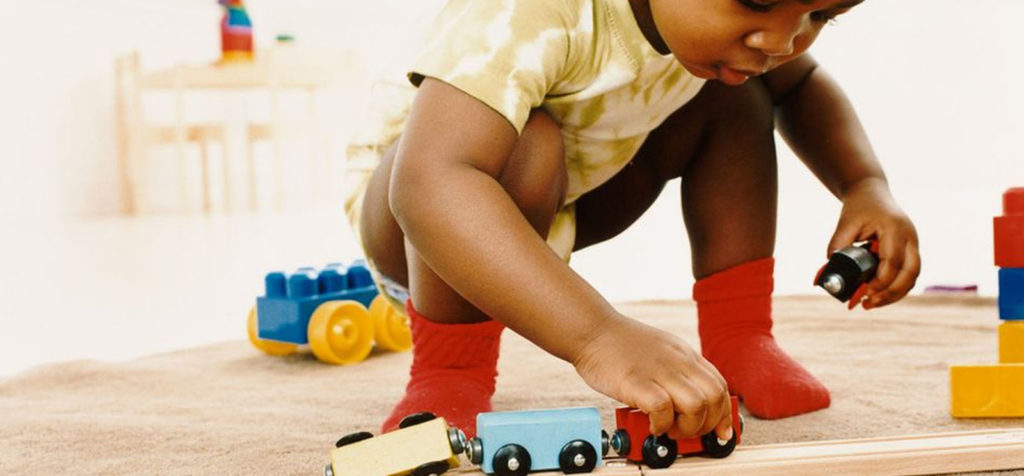1. Ditch the Batteries
My first recommendation, is to skip the batteries. If the toy requires batteries, you probably don’t want it. OR…if it takes batteries, you can take them out. One good example is a the really cute farm set from a very popular toy maker. The toy set itself is great! But the barn has batteries so that it can make noises. You don’t need the barn to make noises. You want your CHILD to make the noises! So…do like I do and just take them out.
There are a few exceptions to this, of course. My kids have a couple toys that use batteries that I have allowed them to keep (with batteries in). They have a couple toy cameras that take real pictures, a toy lap top (I could take the batteries out, but I’ve left them in), a toy vacuum (again, I could remove the batteries here too), a microphone that you can record your voice (so cool), and a “karaoke” type toy. Their toy drill also requires batteries and it is such a cool toy-it actually works! So again…there definitely are exceptions but I would try to have most of your toys battery free.
2. Pick Open Ended Toys
What are open ended toys? They are toys that have no beginning, middle or end. They can be used in a variety of ways and allow your child creative freedom in how to manipulate and use them. These toys tend to be the more basic and traditional toys. Which is NEXT on my list!
3. Go Back to the Basics: Pick Traditional Toys
As mentioned above, the more traditional toys also tend to be more open ended in nature. Here are some examples of open ended, basic traditional toys:
- Wooden blocks
- Legos
- Cars, trucks, transportation toys (they do NOT need to make noise! That is what your child is for. Take the batteries out!)
- Simple train tracks and trains (we have wooden set with NO batteries. However, I do have a plastic set WITH and without batteries to use with clients. Let’s be honest..it *is* fun to watch the trains go around the track sometimes!)
- Play kitchen and play food
- Farm Set (no noisy ones!) or other animal sets that suit your child’s interests (dinosaurs for example)
- Doll House
- Mr. Potato Head
- Play Dough
- Dress up clothes
- Tool Set
- Tea Set
- Baby doll/baby blanket
4. Don’t Worry About Gender
I just talked about this in my recent post The Importance of PLAY for Speech and Language Development. When picking toys for your child, don’t stick to gender specific toys. Let your girls play with trucks and trains and your boys play with toy kitchens and baby dolls.
5. Skip The “ABCs and 123’s”
On the subject of going back to basics…Go take a walk through Target or any big chain store’s toy department. There is this aisle (ok, several sometimes) with shelves stacked high with toys that say things like “Teaches the ABCs!” “Educational!” “Teaches Colors and Numbers!” and on and on.
6. Use Toys That get Them Moving
It is so important to get your kids moving! Even when indoors. Making forts and tunnels are great ways to keep them moving indoors, without actually having to *buy* specific “toys” for that purpose. We also have some ride-on toys that we allow in the house (we have tile/hardwood floors) that keep our children moving as well as balls (yes, even inside).
7. Don’t Forget to Get Outside
You don’t have to *buy* outdoor toys. Heading to the park is great and FREE! But sometimes you don’t have a park near by or it is difficult to get you and the kids there…so here are some of my favorite outdoor toys:
- Water table (A big bucket will do, or a small pool)
- Buckets, cups, spoons (again, these can just be from your kitchen…tupperware works well!)
- Small shovel/hoe for digging
- Ride on toys
- Play house– This one is a bigger purchase. We have one and it can provide HOURS of independent, creative play!
8. Less is More
So here I have just listed some toy recommendations for you. But, the truth is that less is more. Your child does NOT need toys upon toys! In fact, too many toys can actually be a big negative. Believe it or not, children can get overwhelmed with too many toys and can end up moving quickly from one toy to another which can actually limit their play (and language) opportunities overall.
9. Consider a Toy Rotation
One solution to having a plethora of toys is to do a toy rotation. We used a toy rotation in our last home for a while and it was GREAT.
10. Sometimes the BEST Toys are not “Toys” at All!
You probably noticed that a few times I mentioned using things that aren’t traditional “toys” as toys (like making forts or using buckets for water play). This is because sometimes the BEST toys are not *real* toys at all! Pots, pans, wooden spoons, cardboard boxes, homemade forts with blankets and pillows…these can be the BEST toys for your child. Be creative. Think outside (or inside) the box.
And sometimes YOU are the best toy for your child. Sing with him. Play patty-cake. Talk in a funny voice. Tell him stories. Be silly. Play hide and seek. Teach him finger plays. Play lap games.




